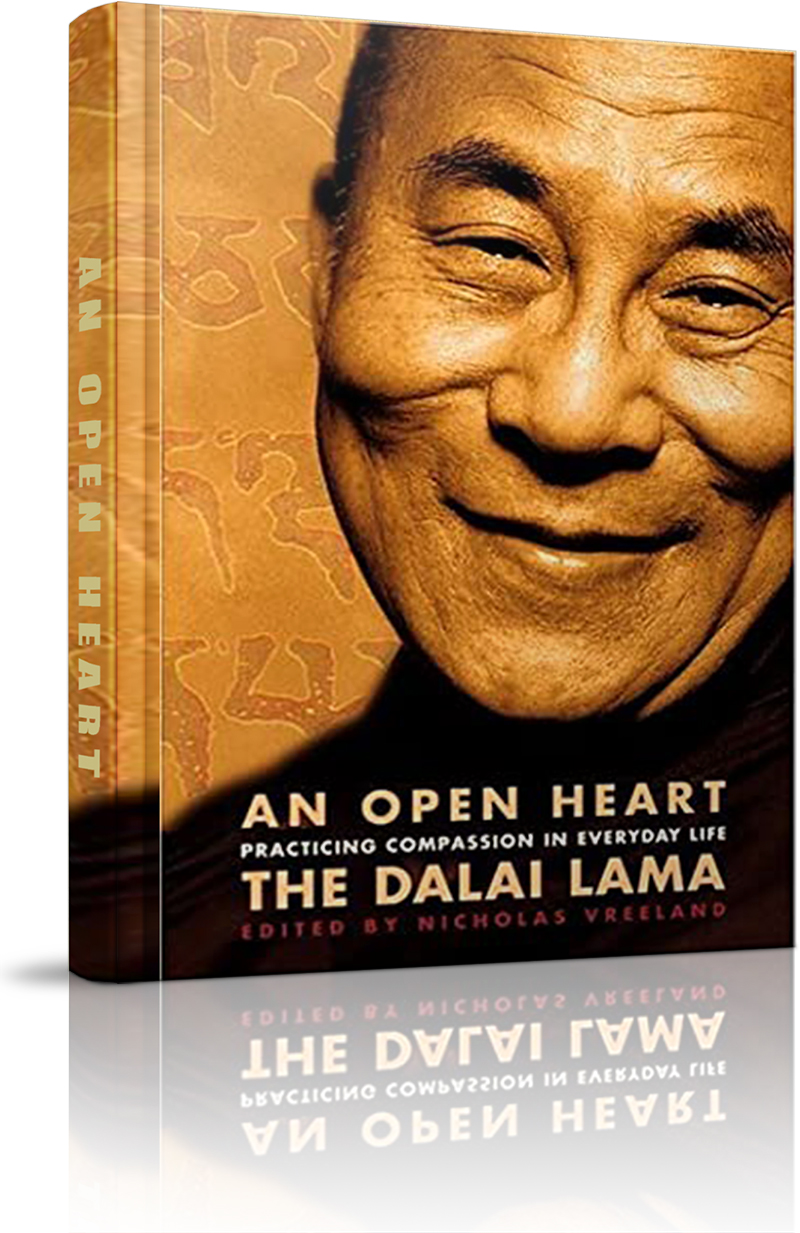Do ái sinh sầu ưu,do ái sinh sợ hãi; ai thoát khỏi tham ái, không sầu, đâu sợ hãi?Kinh Pháp Cú (Kệ số 212)
Kẻ bi quan than phiền về hướng gió, người lạc quan chờ đợi gió đổi chiều, còn người thực tế thì điều chỉnh cánh buồm. (The pessimist complains about the wind; the optimist expects it to change; the realist adjusts the sails.)William Arthur Ward
Muôn việc thiện chưa đủ, một việc ác đã quá thừa.Tủ sách Rộng Mở Tâm Hồn
Hạnh phúc giống như một nụ hôn. Bạn phải chia sẻ với một ai đó mới có thể tận hưởng được nó. (Happiness is like a kiss. You must share it to enjoy it.)Bernard Meltzer
Để đạt được thành công, trước hết chúng ta phải tin chắc là mình làm được. (In order to succeed, we must first believe that we can.)Nikos Kazantzakis
Hạnh phúc chân thật là sự yên vui, thanh thản mà mỗi chúng ta có thể đạt đến bất chấp những khó khăn hay nghịch cảnh. Tủ sách Rộng Mở Tâm Hồn
Chúng ta không làm gì được với quá khứ, và cũng không có khả năng nắm chắc tương lai, nhưng chúng ta có trọn quyền hành động trong hiện tại.Tủ sách Rộng Mở Tâm Hồn
Đừng bận tâm về những thất bại, hãy bận tâm đến những cơ hội bạn bỏ lỡ khi thậm chí còn chưa hề thử qua. (Don’t worry about failures, worry about the chances you miss when you don’t even try. )Jack Canfield
Khi ý thức được rằng giá trị của cuộc sống nằm ở chỗ là chúng ta đang sống, ta sẽ thấy tất cả những điều khác đều trở nên nhỏ nhặt, vụn vặt không đáng kể.Tủ sách Rộng Mở Tâm Hồn
Nếu chúng ta luôn giúp đỡ lẫn nhau, sẽ không ai còn cần đến vận may. (If we always helped one another, no one would need luck.)Sophocles
Ngu dốt không đáng xấu hổ bằng kẻ không chịu học. (Being ignorant is not so much a shame, as being unwilling to learn.)Benjamin Franklin
Trang chủ »» Danh mục »» SÁCH ANH NGỮ HOẶC SONG NGỮ ANH-VIỆT »» An Open Heart »» Chapter 14: Buddhahood »»
An Open Heart
»» Chapter 14: Buddhahood
 Xem Mục lục
Xem Mục lục  Vietnamese || Đối chiếu song ngữ
Vietnamese || Đối chiếu song ngữ
- none
- Introduction
- Chapter One: The desire for happiness
- Chapter Two: Meditation - A beginning
- Chapter 3: The material and immaterial world
- Chapter 4: Karma
- Chapter 5: The afflictions
- Chapter 6: The vast and the profound: Two aspects of the Path
- Chapter 7: Compassion
- Chapter 8: Meditating on compassion
- Chapter 9: Cultivating equanimity
- Chapter 10: Bodhicitta
- Chapter 11: Calm abiding
- Chapter 12: The nine stages of calm abiding meditation
- Chapter 13: Wisdom
- »» Chapter 14: Buddhahood
- Chapter 15: Generating Bodhicitta
- Afterword (Khyongla Rato and Richard Gere)
- none

The term Mahayana has often been associated with the forms of Buddhism that migrated to Tibet, China, and Japan. This term is also sometimes applied to different Buddhist philosophical schools. However, here I am using the term Mahayana in the sense of an individual practitioner’s inner aspirations. The highest motivation we can have is to provide all sentient beings with happiness, and the greatest endeavor we can engage in is helping all sentient beings attain that happiness.
Mahayana practitioners devote themselves to attaining the state of a Buddha. They work at removing the ignorant, afflictive, selfishly motivated thought patterns that keep them from attaining the fully enlightened, omniscient state that allows them to truly benefit others. Practitioners devote themselves to refining virtuous qualities such as generosity, ethics, and patience to the point where they would give of themselves in any way necessary and would accept all difficulty and injustice in order to serve others.
Most important, they develop their wisdom: their realization of emptiness. They work at making this realization of the emptiness of inherent existence more and more profound. They must refine this insight and must intensify the subtlety of their mind in order to do so. It is, of course, difficult to describe the process of reaching the ultimate attainment of Buddhahood. Suffice it to say that as one’s realization of the emptiness of inherent existence becomes even deeper, all vestiges of selfishness are removed and one approaches the fully enlightened state of Buddhahood. Until we ourselves begin to actually approach such realizations, however, our understanding remains theoretical.
When the last remnants of ignorant misconceptions and their predispositions have been removed from a practitioner’s mind, that purified mind is the mind of a Buddha. The practitioner has attained enlightenment. Enlightenment, however, has a number of other qualities, referred to in Buddhist literature as bodies. Some of these bodies take physical form, others do not. Those that do not take physical form include the truth body. This is what the purified mind is known as. The omniscient quality of the enlightened mind, its ability to constantly perceive all phenomena as well as their nature of being empty of inherent existence, is known as a Buddha’s wisdom body. And the empty nature of this omniscient mind is referred to as a Buddha’s nature body. Neither of these bodies (considered to be aspects of the truth body) has physical form. These particular bodies are all achieved through the “wisdom” aspect of the path.
Then there are the physical manifestations of enlightenment. Here we enter a realm that is very hard for most of us to grasp. These manifestations are called Buddha’s form bodies. The Buddha’s enjoyment body is a manifestation that has physical form but is invisible to nearly all of us. The enjoyment body can be perceived only by very highly realized beings, bodhisattvas whose profound experience of the ultimate truth is motivated by their intense desire to attain Buddhahood for the sake of all.
From this enjoyment body infinite emanation bodies spontaneously issue forth. Unlike the enjoyment body, these manifestations of the fully enlightened attainment of Buddhahood are visible and accessible to common beings, beings like us. It is by means of emanation bodies that a Buddha is able to assist us. In other words, these manifestations are embodiments of the enlightened being. They are assumed exclusively and purely for our benefit. They come into being at the time when a practitioner attains full enlightenment, as a result of his or her compassionate aspiration to help others. It is by means of these physical emanations that a Buddha teaches others the method by which he himself attained his state of freedom from suffering.
How does the Buddha assist us through emanation bodies? The main medium through which a Buddha performs his enlightened activity is this teaching. Shakyamuni Buddha, the historical Buddha who attained enlightenment under the Bodhi Tree 2,500 years ago, was an emanation body.
Such an explanation of the different aspects of the enlightened state of Buddhahood may sound a little like science fiction, especially if we explore the possibilities of infinite emanations of infinite Buddhas manifesting within infinite universes in order to help infinite beings. However, unless our understanding of Buddhahood is complex enough to embrace these more cosmic facets of enlightenment, the refuge we take in the Buddha will not have the necessary force. Mahayana practice, in which we commit ourselves to providing all sentient beings with happiness, is a large undertaking. If our understanding of Buddha were limited to the historic figure of Shakyamuni, we would be seeking refuge in someone who died long ago and who no longer has the power to help us. In order for our refuge to be truly forceful, we must recognize the different aspects of the state of Buddhahood.
How do we explain this never-ending continuation of a Buddha’s existence? Let us look at our own mind. It is like a river - a flowing continuum of moments of mere knowing, each leading to another moment of knowing. The stream of such moments of consciousness goes from hour to hour, from day to day, from year to year, and even, according to the Buddhist view, from lifetime to lifetime. Though our body cannot accompany us once our life force is exhausted, the moments of consciousness continue, through death and eventually into the next life, whatever form it may take.
Each one of us possesses such a stream of consciousness. And it is both beginningless and endless. Nothing can stop it. In this sense it is unlike emotions such as anger or attachment, which can be made to cease by applying antidotes. Furthermore, the essential nature of the mind is said to be pure; its pollutants are removable, making the continuation of this purified mind eternal. Such a mind, free of all pollution, is a Buddha’s truth body.
If we contemplate the state of full enlightenment in this way, our appreciation of the Buddha’s magnitude grows, as does our faith. As we recognize the qualities of a Buddha, our aspiration to attain this state intensifies. We come to appreciate the value and necessity of being able to emanate different forms in order to assist infinite beings. This gives us the strength and determination to achieve the enlightened mind.
MUA THỈNH KINH SÁCH PHẬT HỌC
DO NXB LIÊN PHẬT HỘI PHÁT HÀNH
Mua sách qua Amazon sẽ được gửi đến tận nhà - trên toàn nước Mỹ, Canada, Âu châu và Úc châu.
Quý vị đang truy cập từ IP 216.73.216.3 và chưa ghi danh hoặc đăng nhập trên máy tính này. Nếu là thành viên, quý vị chỉ cần đăng nhập một lần duy nhất trên thiết bị truy cập, bằng email và mật khẩu đã chọn.
Chúng tôi khuyến khích việc ghi danh thành viên ,để thuận tiện trong việc chia sẻ thông tin, chia sẻ kinh nghiệm sống giữa các thành viên, đồng thời quý vị cũng sẽ nhận được sự hỗ trợ kỹ thuật từ Ban Quản Trị trong quá trình sử dụng website này.
Việc ghi danh là hoàn toàn miễn phí và tự nguyện.
Ghi danh hoặc đăng nhập
... ...


 Trang chủ
Trang chủ










